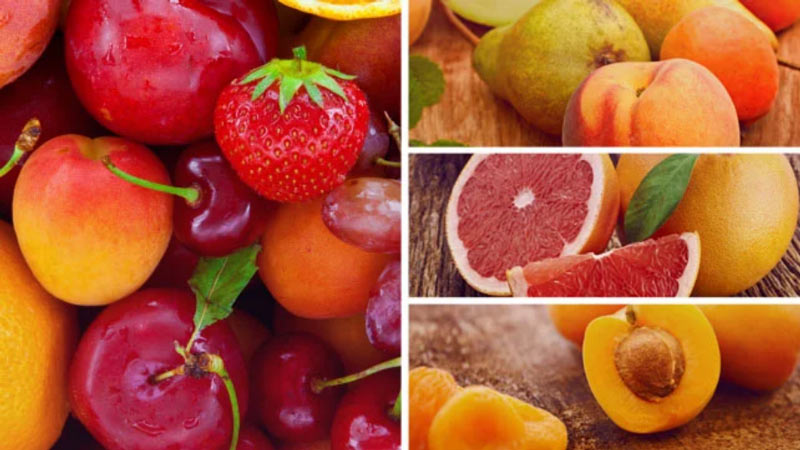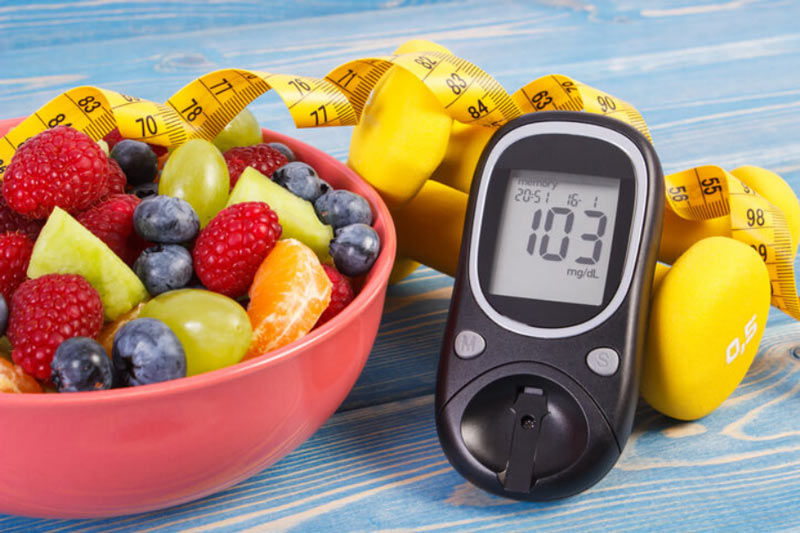Having diabetes means carefully monitoring your food intake to ensure it won’t spike your blood sugar levels. Plenty of low-glycemic fruits can be included in a diabetic diet, providing beneficial vitamins, minerals, and fiber. Understanding glycemic index (GI) scores, determining the right portion sizes, and how different combinations of foods affect blood glucose levels are critical elements when managing diabetes through diet.
We will explore the top 10 recommended low-glycemic fruits for people with diabetes, which offer various nutritional benefits while helping keep blood glucose measurements within normal range.
Low-Glycemic Fruits

Low-glycemic fruits are considered those with a glycemic index of 55 or lower. This is because the lower the GI score, the slower it causes your blood sugar levels to rise after consumption. The Glycemic Index (GI) measures how much food can affect blood glucose levels.
Foods ranked on the GI scale range from 0 – 100, with pure glucose set at 100. Low-glycemic foods rank 55 or less, medium-glycemic foods rank between 56 – 69, and high-glycemic foods have a GI score above 70.
Low-Glycemic Fruits To Include In Your Diabetes Diet

- Apples: Apples have an average GI score of 38 and are packed with essential vitamins, minerals, and fiber that help to regulate blood sugar levels.
- Berries: All types of berries, including strawberries, blueberries, and raspberries, have one of the lowest GI scores among all fruits. They are also full of antioxidants and can help reduce inflammation.
- Oranges: Oranges come in at a GI score of 40, making them an excellent low-glycemic choice for people with diabetes. They are rich in vitamin C and other nutrients like beta-carotene, which supports healthy eyesight and vision.
- Peaches: Peaches have a glycemic index score of 42, making them a great snack or addition to meals for those with diabetes. They are packed with essential vitamins and minerals, which help to regulate blood sugar levels.
- Pears: Pears have a GI score of 38, making them one of the best low-glycemic fruits for people with diabetes to enjoy. They are full of antioxidants and other nutrients like potassium that can help reduce the risk of heart disease.
- Plums: Plums have a GI score of 39 and are an excellent source of fiber which helps to keep your blood sugar levels in check. They are also rich in vitamin C and other important nutrients that support overall health and well-being.
- Grapes: Grapes come in at a GI score of 43, making them one of the lowest glycemic fruits available for those with diabetes. They are packed with antioxidants and other essential nutrients that can help reduce inflammation.
- Kiwi: Kiwis have a GI score of 42 and are an excellent fiber source that helps regulate blood sugar levels. They also provide essential vitamins and minerals that support overall health and well-being.
- Apricots: Apricots come in at a GI score of 40, making them an ideal choice for people with diabetes looking for a low-glycemic fruit option. They are loaded with antioxidants, vitamin A, and other important nutrients like potassium which help to support heart health.
- Cherries: Cherries have one of the lowest GI scores among all fruits, coming in at 25, making them a great option for those with diabetes. They are packed with antioxidants and other essential nutrients that can help reduce inflammation.
Benefits Of Low-Glycemic Fruits for Diabetes Patients
- Slow digestion: Low-glycemic fruits have a low GI score, which means they are digested more slowly and cause your blood sugar levels to rise slower than high-glycemic fruits. This can help keep your glucose levels in check for longer periods.
- Increased fiber content: Low-glycemic fruits contain higher amounts of dietary fiber which help slow down the absorption of sugar into the bloodstream and keep you feeling fuller for longer periods. Fiber also helps to regulate cholesterol levels and decrease inflammation in the body, making it an important nutrient for diabetics to include in their diet.
- Improved insulin sensitivity: Eating low-glycemic fruits can help improve your body’s sensitivity to insulin which is essential for regulating your blood sugar levels.
- Reduced risk of cardiovascular disease: Eating a diet that includes low-glycemic fruits has been linked to a reduced risk of heart disease, stroke, and other cardiovascular complications due to their anti-inflammatory properties and ability to help keep cholesterol levels in check.
- More vitamins and minerals: Low-glycemic fruits are often packed with essential vitamins, minerals, and antioxidants, which can help support overall health and well-being. They also provide important nutrients like potassium, which helps to regulate blood pressure levels.
- Weight control: Eating a diet that includes low-GI foods can help keep your body weight in check by keeping you fuller for longer periods and reducing cravings for unhealthy snacks between meals.
Incorporating low-glycemic fruits into your diet is a great way to manage diabetes and get all the essential nutrients your body needs without spiking your blood sugar levels. Eating a balanced diet with plenty of fresh fruits and vegetables, lean proteins, complex carbohydrates, and healthy fats will help to keep you on track when managing your diabetes.
Recipes Featuring Low-Glycemic Fruits
Mixed Berry Smoothie: Start your day with this healthy and delicious smoothie. Blend a cup of frozen mixed berries, half a banana, one tablespoon of honey, a teaspoon of vanilla extract, and some almond milk until smooth. Serve cold for the perfect breakfast or snack option.
- Baked Apricot Oatmeal: This is easy to make a dish packed with flavor. Preheat the oven to 350 degrees Fahrenheit and mix one cup of rolled oats, ¼ teaspoon baking powder, ½ teaspoon cinnamon, ½ cup fresh apricots (chopped), and two tablespoons maple syrup in a bowl. Spread onto a greased baking sheet and bake for 12 minutes before serving warm.
- Mango-Coconut Popsicles: Enjoy a refreshing treat with this easy-to-make recipe. Mix one cup of frozen mango chunks, ¼ cup of coconut milk, and two tablespoons of honey until smooth. Pour the mixture into popsicle molds and freeze for 3-4 hours before serving cold.
- Blueberry Parfait: Layer yogurt, fresh blueberries, and granola together in a jar or glass container for an easy-to-make snack or breakfast on the go. Start with a layer of yogurt at the bottom, followed by a layer of granola and fresh blueberries. Repeat until you have used all your ingredients, then top off with some extra granola for crunch.
FAQS
Are there any risks associated with eating low-glycemic fruits?
No known risks are associated with eating low-glycemic fruits as part of a balanced diet.
Can I use low-glycemic fruits while following a diabetic diet?
Yes, low-glycemic fruits can be a great addition to any diabetic diet. They provide essential nutrients that help regulate blood sugar levels and reduce the risk of complications associated with diabetes.
Which fruit is not for diabetes?
Fruits high in sugar, such as bananas, pineapple, and watermelon, should be avoided by those with diabetes. These fruits have a higher glycemic index than others, which can quickly raise blood sugar levels. It is important to talk to your doctor or dietitian about what fruits are best for managing your diabetes.
Conclusion
We have looked into the benefits of having low-glycemic fruit as part of a diabetes management plan. They provide necessary vitamins and minerals without too much sugar, an important factor when considering diabetes and its associated metabolic disorders. While some research has demonstrated that low glycemic fruits are best to include in your diet, more evidence must be collected to further support this assertion.

Remedies To Get Rid of Headaches
Apr 18, 2023

What is Hyperpigmentation
Apr 20, 2023

Health Benefits of Gymnema Sylvestre
Apr 26, 2023

Benefits of Hawthorn Berry
Apr 20, 2023

What Is the A-Positive Blood Type Diet
Apr 30, 2023

How to Get Rid of Fluid on The Knee
Jul 30, 2023

Are Cheerios Healthy
Apr 18, 2023

Home and Natural Remedies for Toothache Pain
Apr 19, 2023



